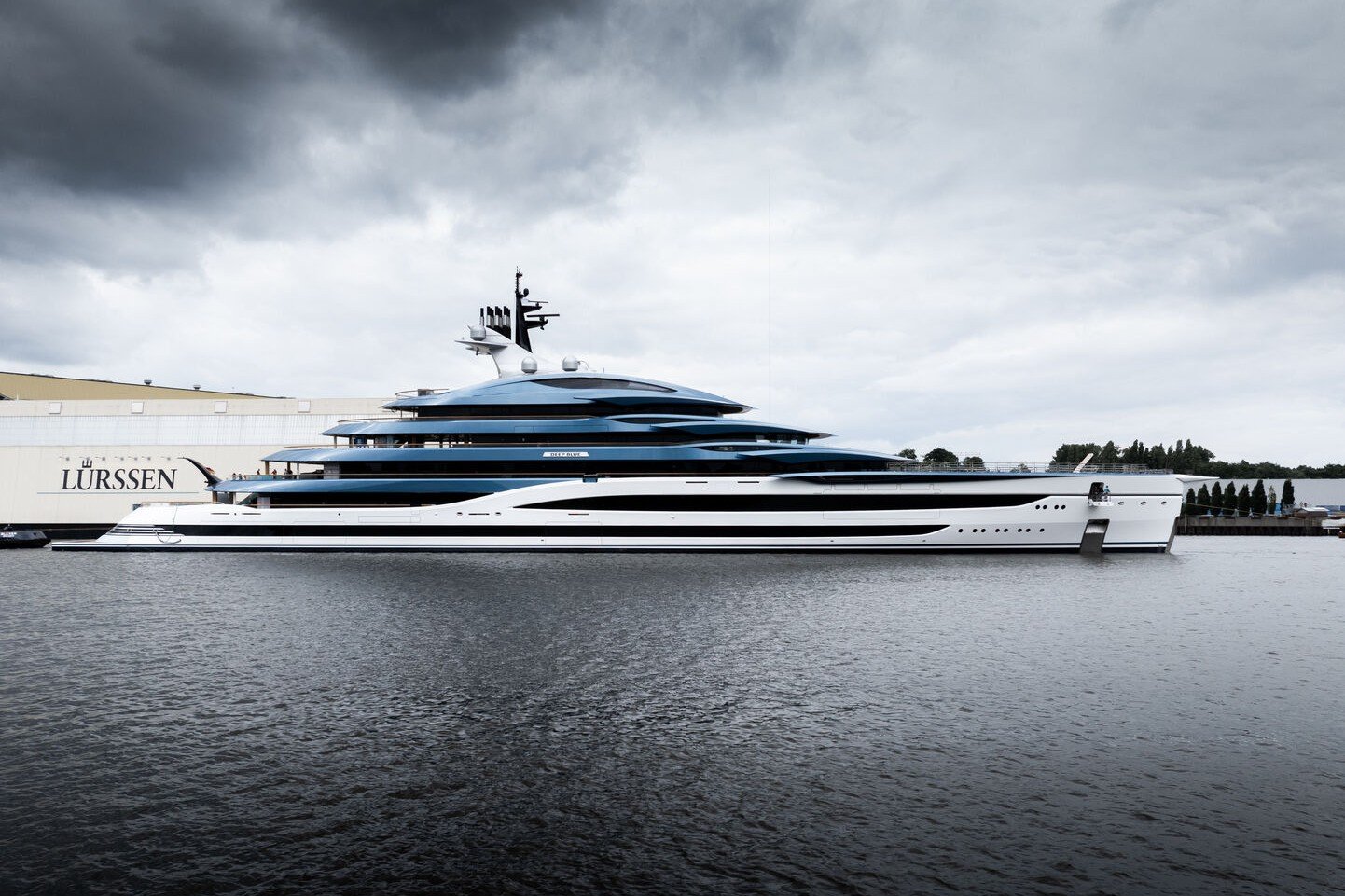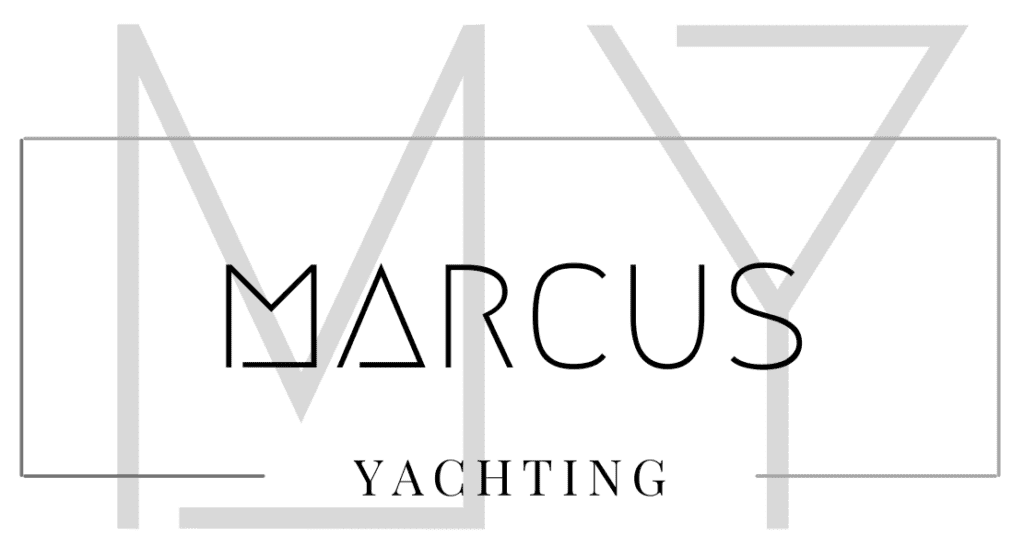
The Evo R6 isn’t afraid to let it all hang out.
Brand Extension
A clever passerelle and an intriguing expanding deck might get all the attention, but there’s more to this Italian weekender than outdoor origami.
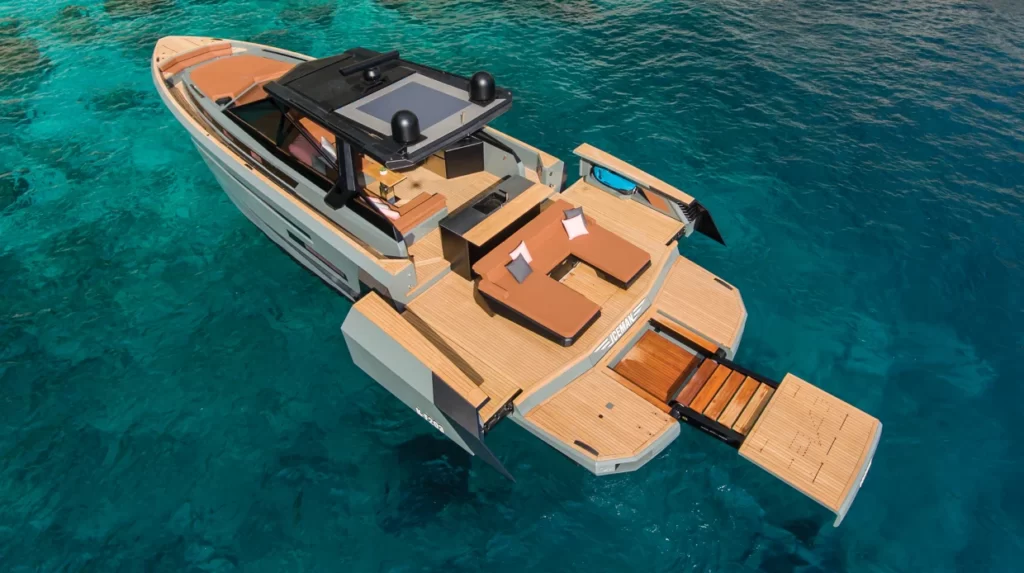
On the chart it’s the Golfo di La Spezia, but in the marketing materials of the local tourist authorities it’s increasingly being referred to as the “Bay of Poets.” Yes, Dante and Petrarch took their vacations here, but that’s not who they’re referring to. The heavyweight medieval Italians seem to have been displaced in popular culture by the more whimsical allure of the English Romantics, led by the tragic Percy Shelley, who lived in Lerici for a while and died in a boating accident just down the coast; his talented wife Mary, the author of Frankenstein; and that glowering, dark-eyed toff, Lord Byron.
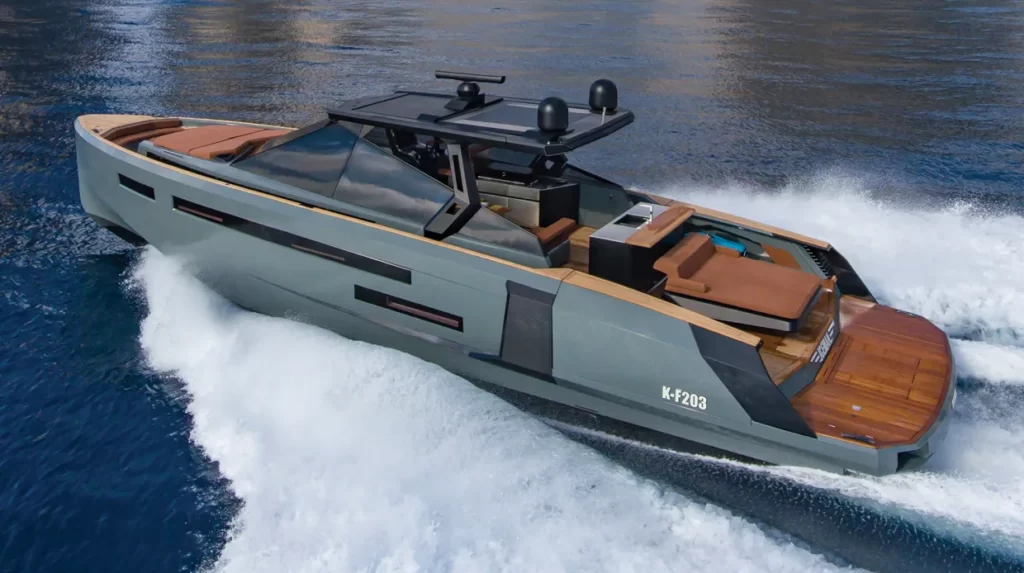
Byron spent time in Porto Venere, a beautiful natural harbor on the opposite side of the bay, which is sheltered by the island of Palmaria. The distinctively striped stonework of the 13th-century church of San Pietro looks down from its rocky peninsula to the Cala dell’Arpaia, which we are now encouraged to call Byron’s Grotto. Legend has it that the English milord used to swim across to see the Shelleys, which would have been no small achievement, as the gulf is more than 3 miles across—and he had a club foot. Knowing Byron, however, the other version of the legend—that he had a mistress in Lerici—seems equally plausible.

Either way, the busy metropolis of La Spezia holds itself aloof from all this tourist trivia at the head of a bay fringed with commercial shipyards, a major naval base and a variety of yacht companies and marinas. Here, Evo Yachts unveiled the open version of its R6.
Something of an origami yacht, with its edgy, angular design, the R6 will be a guaranteed head-turner whenever you slide out the “Xtender” deck sections or operate the “Transformer” passerelle, which goes up as well as down and stows neatly in the swim platform. It is an undeniably eye-catching project. Built by Blue Emme Yachts in Naples and designed by Valerio Rivellini, this is the latest in a line of new boats to emerge since 2014 from this young shipyard. The builder has a pretty relaxed attitude towards customization—this open version came about simply because its owner didn’t want a hardtop, while the R6 is also offered with a choice of two, three or even four cabins. It goes without saying that when it comes to furniture design and color schemes, the customer’s wishes are taken fully into account.
Have a closer look at this Italian beauty in the gallery below:

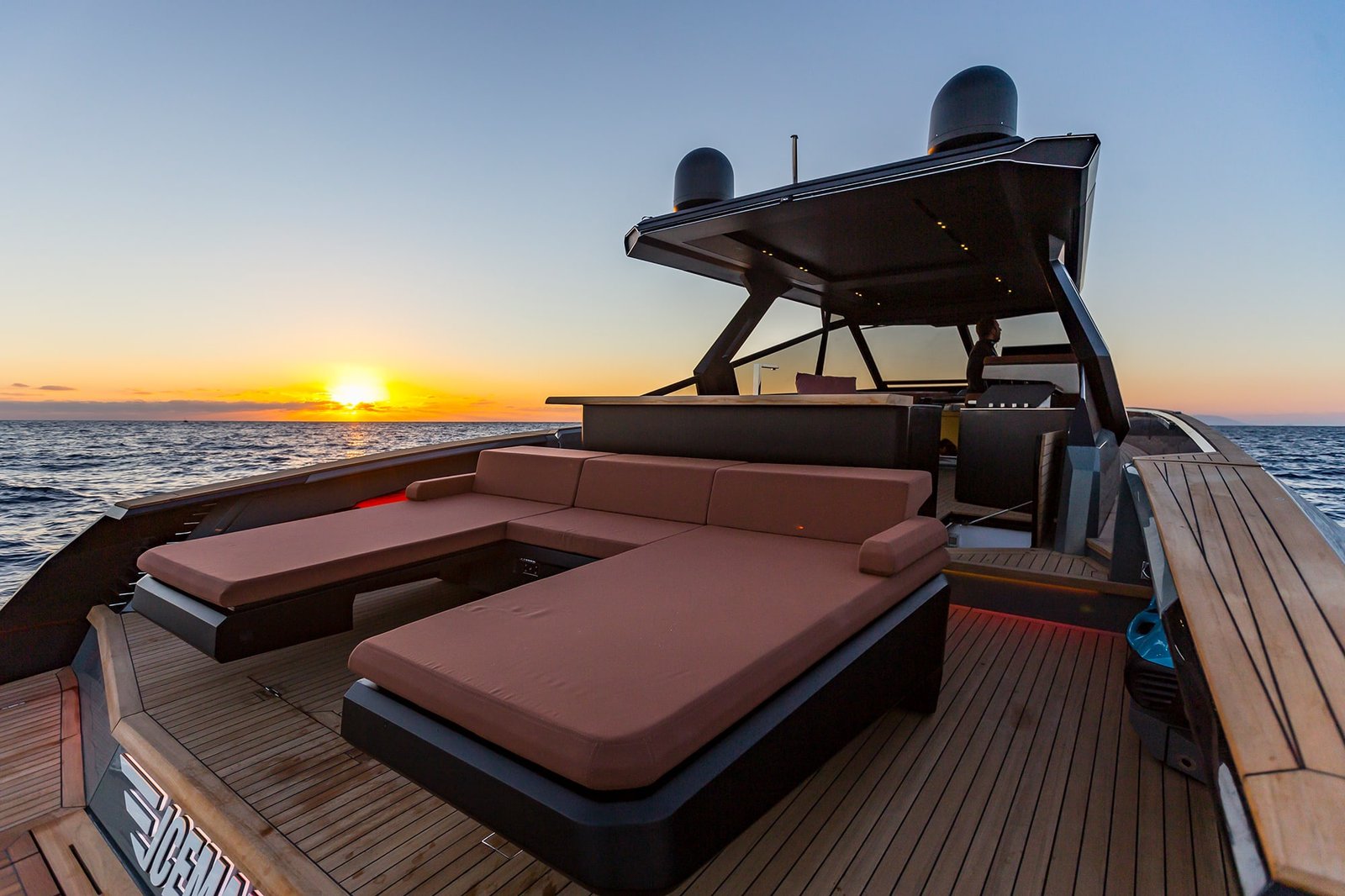




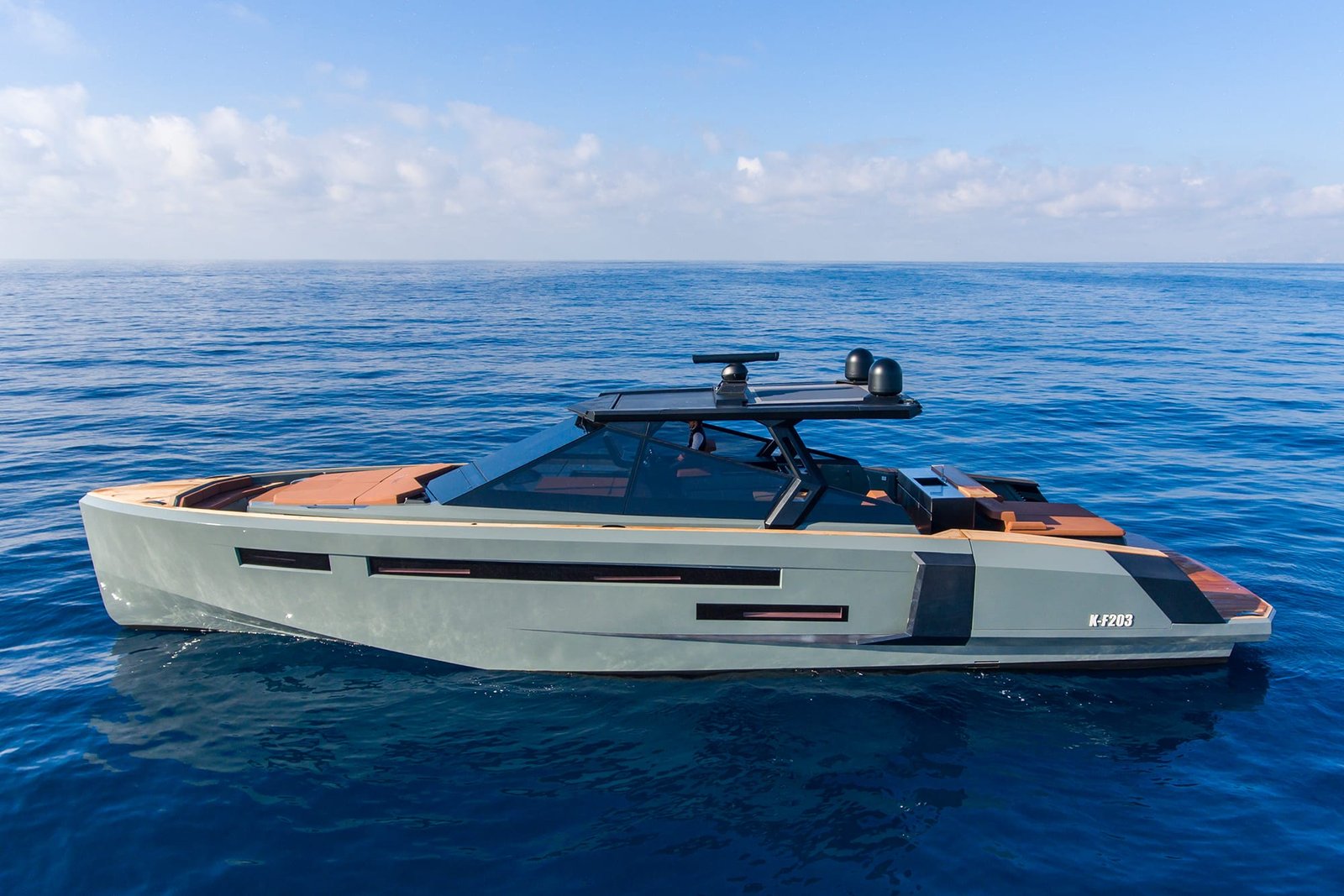


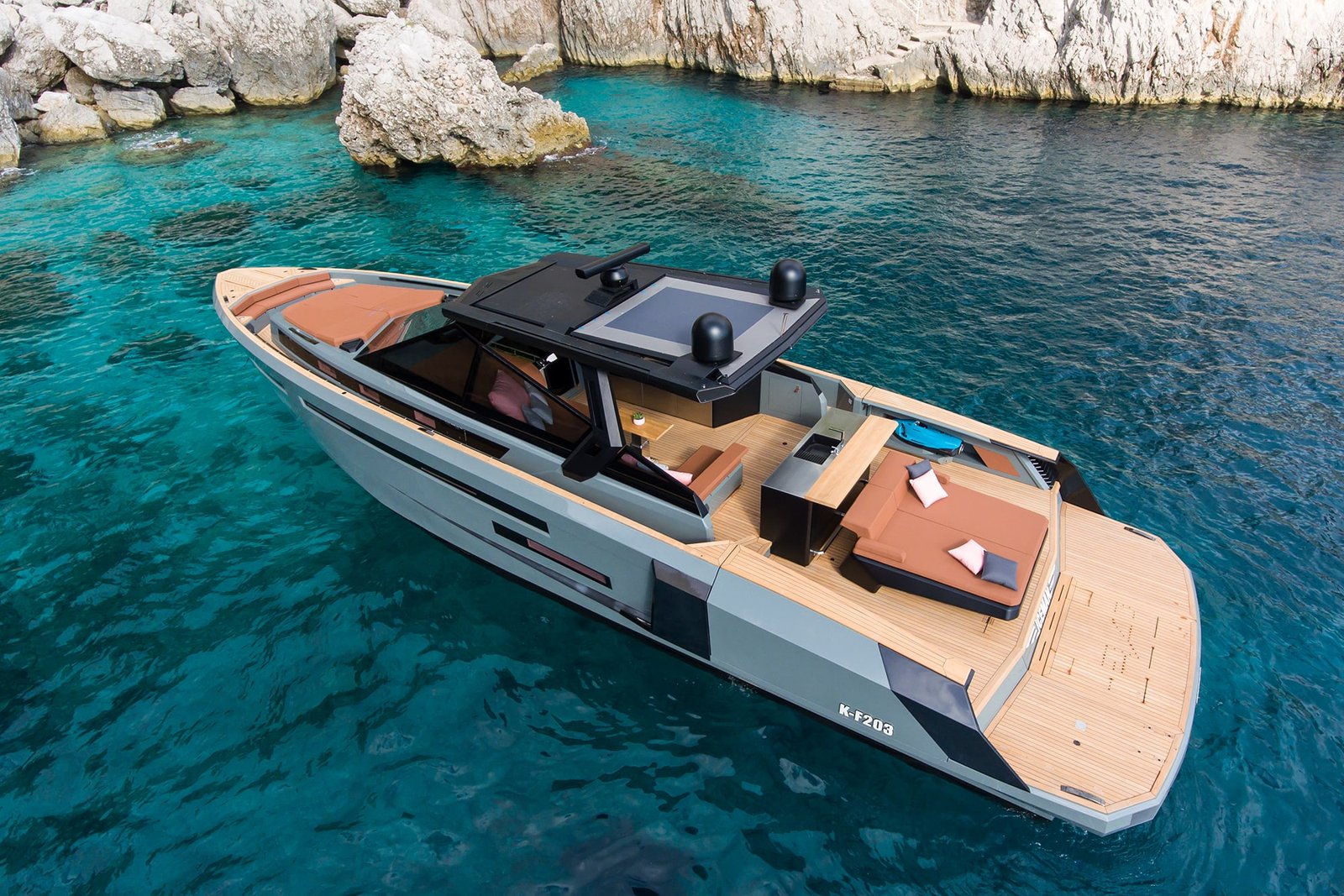

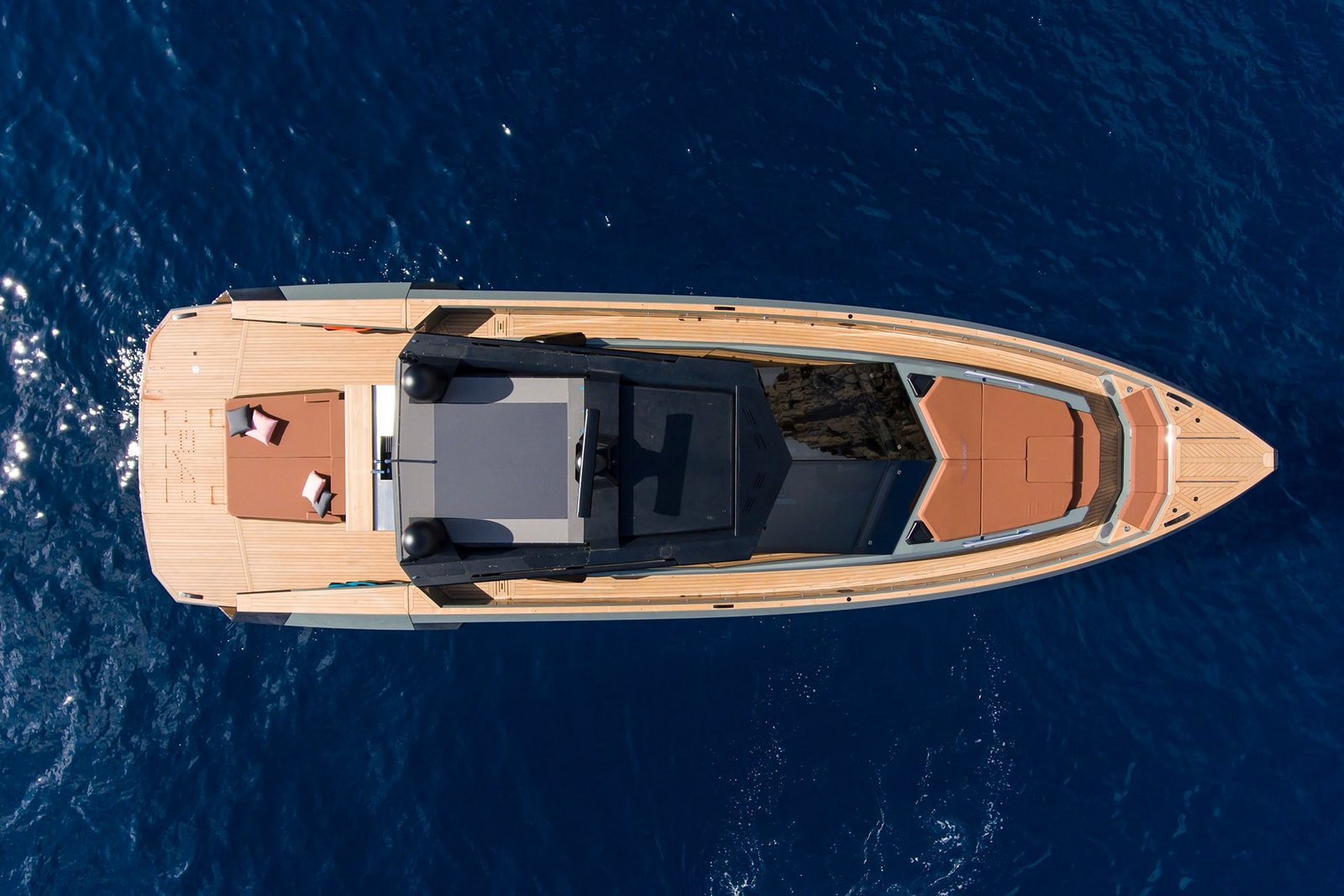



Sporty, runabout looks belie the R6’s substantial size, and even though our test boat had a three-cabin layout—with double berths rather than twins in the guest cabins—it still felt pretty roomy down below. The lower accommodation is focused on the central salon, with a huge mirror along one side, complete with concealed TV, cleverly exaggerating the feeling of space. The owner’s cabin up in the bow retains the 6-foot, 4-inch headroom found further aft, and with its substantial berth and useful stowage volumes it could prove comfortable over a long weekend’s cruising.
The guest cabins share a head compartment on the port side, and what they lack in floor space they make up for in generous berths. In the two-cabin version of the R6, this area is opened up to span the full beam and creates a truly sizeable master cabin.
I noticed a couple of quality issues belowdecks, which were perhaps characteristic of a young boatyard still working out how to bring a boat in on budget without making it too obvious. The door to the forward head needed something to stop it from swinging right into the shower compartment. A magnetic doorstop in the forward cabin had been pulled off, its inadequate self-tapping screws no match for the magnet. Elsewhere, some of the other door catches weren’t working properly. These are minor points, easily rectified—and it’s instructive sometimes, when looking at a new boat, to get an idea of how things might be after a year or two of use.

Up on deck, the slide-out extensions and the clever passerelle mechanism are not the only features highlighting the designer’s ingenuity.
Flip-over backrests on the sofa allow guests to sit facing the wake—always a fun idea when under way—while the reversible chaise lounge can quickly be converted to face the fold-out TV in the forward console. As an option, the folding table can be placed on a hi-lo mount to create an even larger reclining space, and in the absence of a fixed hardtop, an awning can be unrolled from the top of the windscreen and strapped to the radar arch. Secure side decks lead forward to the bow seating area, which has its own sunshade, rigged on carbon fiber poles.
In fully unfolded form, the cockpit and platform together comprise a social area of some 270 square feet—although in the absence of guardrails, the relaxing might be most enjoyed by those without small children.
The dark-tinted windshield is another facet of Evo’s design-led approach, and it looks as sharp and dashing as the cool hull it sits on. Ours was an overcast and gloomy day, but on any boat, especially one capable of over 30 knots, the answer to the question, “Do I want to look great or see great?” should not be hard to figure out.
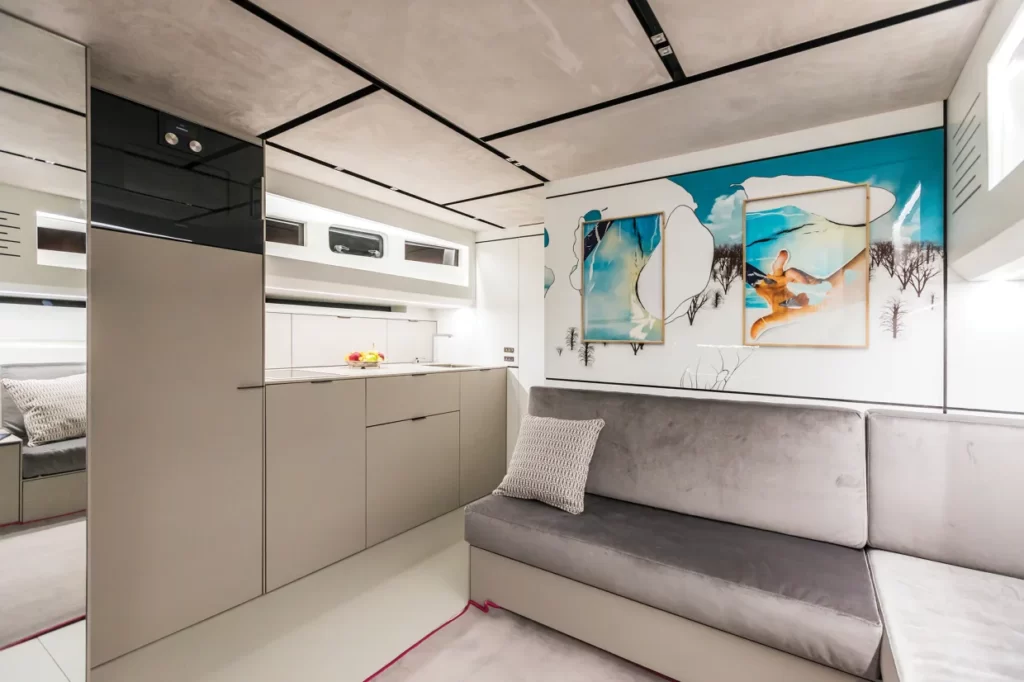
Talk about modern design: The R6 can accommodate up to three double cabins, with ample storage under the berths. The artwork may cost you extra.
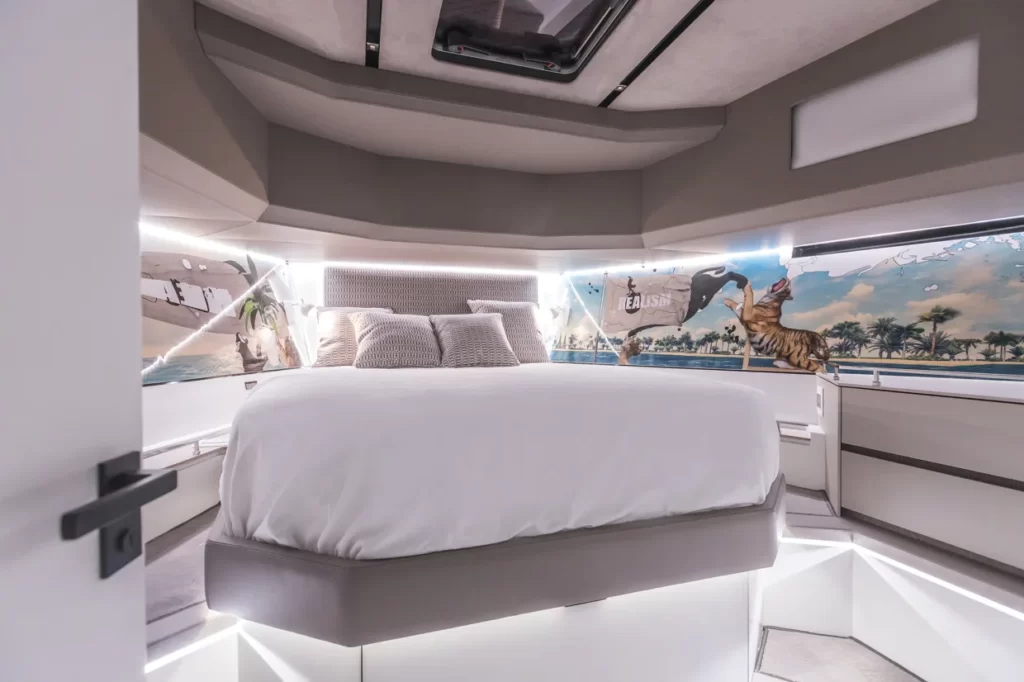
Our test boat was fitted with a pair of Volvo IPS900s, producing 700 hp apiece. Later editions of the R6 come with the option of slightly more powerful IPS950s, or 625-hp IPS800s, which are based on the same 10.8-liter straight-six diesel powerplant. There’s anaccess hatch down through the base of the tender garage, but that obviously involves moving the tender; for daily engine checks you can lift the deck hatch on the starboard side of the cockpit, and crawl through the under-deck stowage area to find the small central doorway into the machinery space. It’s more adventurous than convenient, but hey—this is boating.
Evo’s claimed top speed of 35 knots proved a little optimistic on our test day. There was a season’s growth on the hull, apparently, and the starboard engine was also suffering from a fuel filter blockage, losing about 150 revs. The port motor was fine, however, and between them they propelled the R6 to a two-way average of 30.7 knots with six of us on board, plus the 465-pound Williams Minijet tender and a significant load of fuel and water. It’s possible that with the 725-hp IPS950s, a clean bottom, and clean filters, the R6 might get pretty close to that marketing claim.
But top speed isn’t everything. A hull with an 18-degree deadrise aft coupled to that incisive forefoot makes for a fun drive. The Evo proved to have taut and competent handling, willing acceleration and a very satisfactory way with a wake, as that knife-like bow sliced cleanly through with barely a splash. The broad expanse of the Golfo di La Spezia—sorry, the Bay of Poets—shrank appreciably as we pushed the throttles home, and the distance between Porto Venere and Lerici suddenly didn’t seem that big of a deal.
Lord Byron could have had a lot of fun with one of these.
Evo R6 Test Report

Evo R6 Specifications:
LOA: 58′
Beam: 17’5″
Draft: 4’3″
Displ.: 46.296 lbs.
Fuel: 555 gal.
Water: 135 gal.
Power: 2/700-hp Volvo IPS900
Cruise Speed: 28 knots
Top Speed: 35 knots
Buy EVO R6: DIRECT DELIVERY

